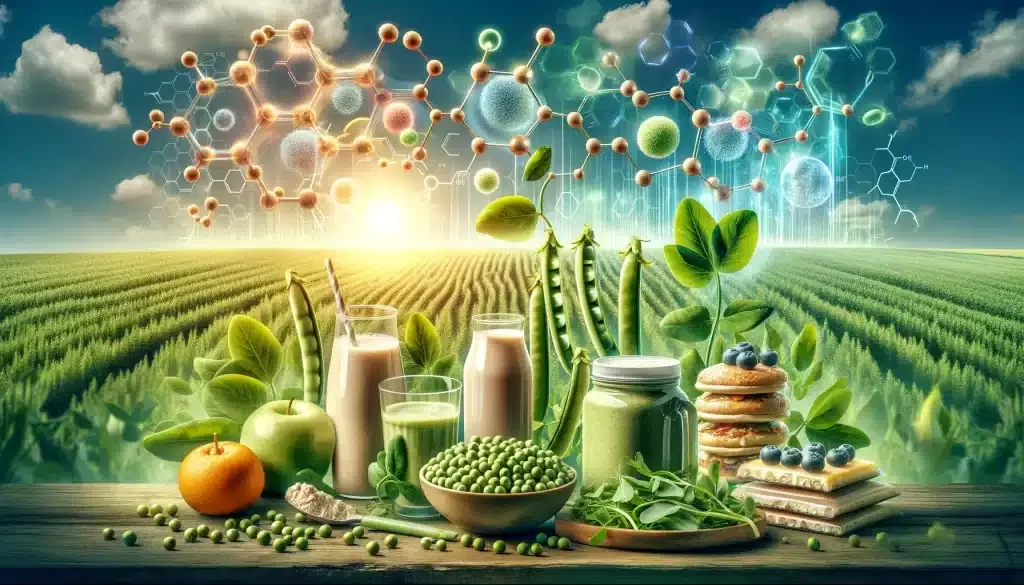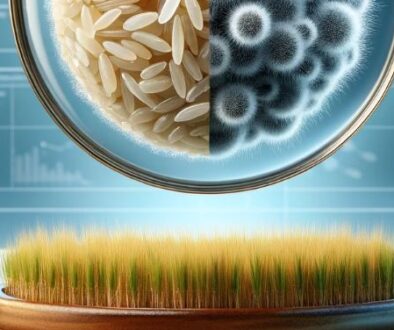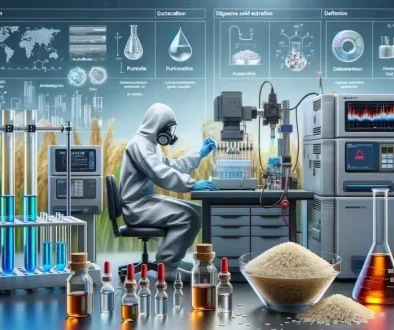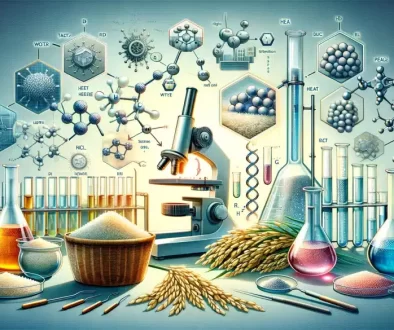Overview of Pea Protein Research
Explore pea protein’s nutritional benefits, functional properties, and innovative modification techniques for enhanced food industry applications.
Keywords: Pretreatment; enzymatic hydrolysis; pea peptides; bitterness; antioxidant activity
Pea protein, derived from the pea plant (Pisum sativum L.), has gained significant attention in the food industry due to its excellent nutritional profile and functional properties. This scientific article provides a comprehensive overview of the current state of research on pea protein, detailing its nutritional characteristics, functional properties, and modification techniques to enhance its application in food formulations.
Nutritional Characteristics of Pea Protein
Peas are one of the primary legumes grown worldwide, with an annual production of approximately 13.5 million tons. Due to their high yield, availability, and cost-effectiveness, peas are widely used as a commercial source of protein in various food applications such as supplements, emulsifiers, fortified beverages, protein mixtures, and encapsulations. The economic value of pea protein was estimated at $32 million in 2017 and is projected to reach $176 million by 2025. Pea protein primarily consists of 7S/11S globulins (65%-80% of total protein) and albumin 2S (10%-20%), featuring a high level of lysine to balance deficiencies in cereal-based diets. Research has demonstrated pea protein and its peptides possess antioxidative, antihypertensive, anti-inflammatory properties, can lower cholesterol, and regulate gut bacterial activity. Moreover, the bioactivity of pea protein and its hydrolysates can be enhanced through chemical or combined processing methods, suggesting that incorporating pea protein-rich foods into the diet could benefit the prevention of some chronic diseases.
Functional Properties of Pea Protein
The functional properties of pea protein, including solubility, water-holding capacity, oil-holding capacity, emulsification, and foaming properties, play a crucial role in its applicability in food formulations. Solubility is a prerequisite for other functional properties and is vital for producing beverages, infant formulas, and other foods requiring instant dissolution without residues. Factors such as pea genotype, protein extraction method, pH, and ionic strength affect pea protein’s solubility. Its water and oil-holding capacities are associated with the texture, mouthfeel, and flavor retention of foods. Emulsification properties are critical for its application as a food ingredient in dairy products, mayonnaise, ice cream, and butter. Overall, the extraction method significantly impacts pea protein’s emulsification characteristics. Foaming properties, described by foaming capacity and stability, vary with cultivation variety but are generally enhanced in the water-soluble fraction of pea protein at specific pH levels.
Modification of Pea Protein
To overcome the limitations in the functional properties of pea protein and expand its application in the food industry, recent studies have explored various methods, including chemical modification, physical techniques, and enzymatic modification. Chemical modification methods, such as conjugation with polysaccharides, have been explored to improve the functional properties of pea protein-polysaccharide complexes. Physical techniques like heat treatment have been found to enhance the stability of pea protein emulsions, while ultrasonic treatment can alter protein conformation and structure, increasing hydrophilicity. Enzymatic modification, regarded as more environmentally friendly and effective, has been used to enhance the gelling and emulsifying properties of pea protein through enzymatic cross-linking, whereas hydrolysis can improve its solubility, emulsification, and foaming properties by reducing molecular weight and exposing hydrophobic groups.
In conclusion, pea protein presents a promising ingredient in food formulations due to its nutritional value and functional properties. However, the inherent limitations of its functional characteristics necessitate further research into modification techniques to improve its applicability in a broader range of food products.
For more further detailed information of this research, feel free to contact our team for asssistance.
Original research by Xia Yixuan, Zhang Hui, Hui Ju, Mu Wanmeng (Food Engineering, Jiangnan University, Wuxi 214122)
About ETprotein:
ETprotein, a reputable rice protein Chinese factory manufacturer and supplier, is renowned for producing, stocking, exporting, and delivering the highest quality organic bulk vegan protein and plant proteins. They include Organic rice protein, clear rice protein, pea protein, clear pea protein, pumpkin seed protein, sunflower seed protein, mung bean protein, etc. Our offerings, characterized by a neutral taste, non-GMO, allergen-free attributes, cater to a diverse range of industries. We serve nutraceutical, pharmaceutical, cosmeceutical, veterinary, as well as food and beverage finished product distributors, traders, and manufacturers across Europe, USA, Canada, Australia, Thailand, Japan, Korea, Brazil, and Chile, among others.
Our specialization includes exporting and delivering tailor-made protein powder and finished nutritional supplements. Our extensive product range covers sectors like Food and Beverage, Sports Nutrition, Weight Management, Dietary Supplements, Health and Wellness Products, and Infant Formula, ensuring comprehensive solutions to meet all your protein needs.
As a trusted company by leading global food and beverage brands and Fortune 500 companies, ETprotein reinforces China’s reputation in the global arena. For more information or to sample our products, please contact us and email sales(at)ETprotein.com today.












